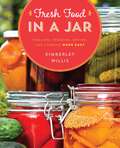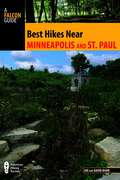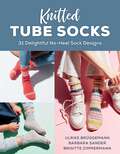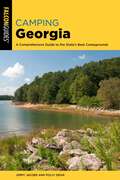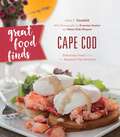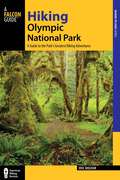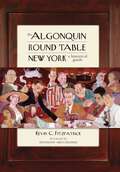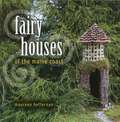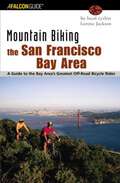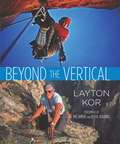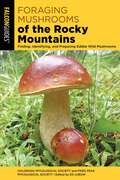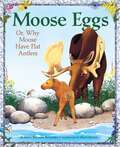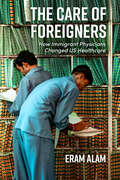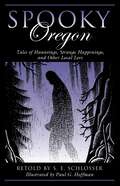- Table View
- List View
Modern Kitchen, Old-Fashioned Flavors
by Gooseberry PatchWe're lucky to have so many convenient ways to produce the wonderful comfort foods we love, with all the flavors we remember from Grandma's kitchen. Got all day? Go low & slow with a slow cooker. Treat your family to slow-simmered flavors...fork-tender pot roasts, tummy-warming soups, cheesy side dishes and more. Short on time or just looking for something new? With an electric pressure cooker, you can cook up all your family's favorite dishes in a fraction of the time...chicken & dumplings, barbecue pulled pork, even down-home green beans that taste like they cooked all day. Anything a slow cooker can do, a pressure cooker can do, and so much more. Make all those other appliances in your kitchen earn their keep too! Your microwave can do more than pop popcorn, like main-dish casseroles, speedy sides and more. Countertop griddles can grill sandwiches, of course, but can also grill a juicy chicken breast to top a hearty salad. Cook chicken fingers and fries to crisp, golden perfection, using a countertop deep fryer. And from your waffle maker, turn out ooey-gooey cheese sandwiches and even warm fresh-baked cookies...who knew? In Modern Kitchen: Old-Fashioned Flavor, you'll find more than 200 recipes from home cooks just like yourself, plus plenty of useful tips for making the most of all those handy kitchen appliances.
Fresh Food in a Jar: Pickling, Freezing, Drying, and Canning Made Easy
by Kimberley WillisFresh Food in a Jar includes everything you need to know about canning, pickling, freezing, and drying—tips, techniques, and equipment—as well as hundreds of recipes for jams, jellies, pickles, relish, sauces, meat jerkies, and more. Includes simple, step-by-step techniques and photos with over 150 recipes and variations.
Best Hikes Near Minneapolis and Saint Paul (Best Hikes Near Series)
by Joe Baur David BaurFeaturing more than 40 of the best hikes in the greater Twin Cities metro area, this exciting new guidebook points locals and visitors alike to trailheads within an hour's drive of Minneapolis and Saint Paul.
Hiking Ruins Seldom Seen: A Guide to 36 Sites Across the Southwest (Regional Hiking Series)
by Dave WilsonThere are ancient treasures hidden across the American Southwest. Tucked away in remote canyons are hundreds of ruins, cultural treasures that provide a wealth of information about the past—and most people never visit them. This fully updated and revised edition of Hiking Ruins Seldom Seen is your ticket to these enchanted sites. Bruce Grubbs leads hikers of all abilities on day hikes and overnight trips to some of the most spectacular areas of the Southwest. Ranging in location from southern Utah to the Grand Canyon, through central and southern Arizona and into New Mexico, the thirty-six ruins and rock-art sites covered here are all off the beaten path, relatively unknown to the public—each one an adventure.Features• GPS-compatible maps• Detailed directions• Trail descriptions with mileage points• Water availability information• Information on hazards en route• Notes on area scenery and wildlife
Knitted Tube Socks: 31 Delightful Sock Designs without the Fussy Heel
by Ulrike Brüggemann Barbara Sander Brigitte ZimmermannDiscover the magic of sock knitting with the ultimate guide to tube socks—the perfect project for beginners and seasoned knitters alike! Forget the fuss of complicated heel turning and embrace a style that adapts effortlessly to any foot. This book introduces you to creative techniques for form-fitting socks, from the spiral sock to fisherman&’s rib to the ultra-comfortable banana sock, all knitted circularly in a continuous tube. Imagine knitting a sock that "grows" with your little ones or adds a unique twist to your wardrobe—all while enjoying a meditative, uninterrupted knitting experience. With easy-to-follow instructions, a variety of stylish options, and a treasure trove of 31 patterns in sizes from child to adult, you&’ll soon be crafting warm, cozy socks for every member of your family!
Camping Georgia: A Comprehensive Guide to the State's Best Campgrounds (State Camping Series)
by Jimmy Jacobs Polly DeanLooking for the ideal spot to pitch your tent or park your RV? Camping Georgia will take you there. This comprehensive guidebook gives detailed descriptions of more than 100 public campgrounds throughout Georgia – from the mountains to the plains to the coastal areas. The listings include campsites managed by national, state, city, and county parks, the Forest Service, the Bureau of Land Management, and the U.S. Army Corps of Engineers. Easy-to-use maps and charts will simplify your search for the perfect campground. You'll also find vital information on camp locations, fees and reservations, facilities and hookups, recreational activities, weather and geography, and local attractions.
Great Food Finds Cape Cod: Delicious Food from the Region's Top Eateries
by John F. CarafoliFood, cooking and restaurants reflect the spirit of Cape Cod, the people who live there, and their many cultures and cuisines. Culinary traditions here are firm, but there is a dynamic food/dining evolution taking place––from the finest white tablecloth restaurants to homey mom and pop cafes, and chic new eateries. Great Food Finds Cape Cod features recipes for the home cook from the region's most celebrated eateries alongside beautiful photography.
Sweet Maple: Backyard Sugarmaking from Tap to Table
by Michelle VisserSweet Maple is an instructional book on backyard sugarmaking that&’s also the story of one family&’s connection to the past on a small New England sugar farm. Throughout its pages, Michelle (the &“sugarmaker&’s wife&”) gives advice on:the 22 different kinds of trees that can be tapped. the process of making syrup, to help you decide what level is right for you.how to make alternative treats, such lilac syrup. the health benefits of maple products, which contain more than 40 antioxidants. substituting processed sugar with all-natural maple syrup in any recipe. the 3 steps to making maple sugar.how to make irresistible maple cream and how to enjoy it. While learning the art of sugarmaking alongside her husband, Michelle guides readers through every step of all-natural syrup production, with directions for tapping one tree or dozens, while detailing the life-changing benefits of using maple syrup in the kitchen.Interspersed with sugaring techniques, tips, sidebars, and storytelling, Michelle shares more than 30 of her family&’s tried-and-true maple recipes—from scones to salads.
Rockhounding Wyoming: A Guide to the State's Best Rockhounding Sites
by Kenneth L. GrahamThe 75 sites described in this guide take you across the red desert to the high mountain majesty of the Big Horns and Wind Rivers as well as the geologic wonders of Yellowstone National Park. Graham, a former hardrock miner, developed an interest in rocks at an early age, and he shares his enthusiasm for rockhounding and his appreciation for the diverse Wyoming landscape that holds the treasure. Each description provides detailed information complete with maps on how to find the remote as well as popular digs, what will likely be found there, the tools to bring, the best season to visit, the appropriate vehicle to drive, or when to lace up your hiking boots to get to those out-of-the-way places.
Hiking Olympic National Park: A Guide to the Park's Greatest Hiking Adventures (Regional Hiking Series)
by Erik MolvarThis updated edition of Hiking Olympic National Park features 66 of the finest trails in and around the park plus 40 additional trail recommendations throughout northwest Washington&’s spectacular landscape. These trails crisscross the park&’s wilderness ecosystem, stretching from the beaches of the Pacific to the heart of the Olympic Mountains. Whether you choose a strenuous backpacking trip over glacier-clad mountains or a short stroll through a temperate rain forest, veteran trail guide and author Erik Molvar provides all the information you need to make the most of hiking the Olympic Peninsula.Look inside to find:Hikes suited to every abilityFull-color photosGPS coordinatesDirections to the trailheadMile-by-mile directional cues
The Algonquin Round Table New York: A Historical Guide
by Kevin C. Fitzpatrick"That is the thing about New York," wrote Dorothy Parker in 1928. "It is always a little more than you had hoped for. Each day, there, is so definitely a new day." Now you can journey back there, in time, to a grand city teeming with hidden bars, luxurious movie palaces, and dazzling skyscrapers. In these places, Dorothy Parker and her cohorts in the Vicious Circle at the infamous Algonquin Round Table sharpened their wit, polished their writing, and captured the energy and elegance of the time. Robert Benchley, Parker&’s best friend, became the first managing editor of Vanity Fair before Irving Berlin spotted him onstage in a Vicious Circle revue and helped launch his acting career. Edna Ferber, an occasional member of the group, wrote the Pulitzer-winning bestseller So Big as well as Show Boat and Cimarron. Jane Grant pressed her first husband, Harold Ross, into starting The New Yorker. Neysa McMein, reputedly &“rode elephants in circus parades and dashed from her studio to follow passing fire engines.&” Dorothy Parker wrote for Vanity Fair and Vogue before ascending the throne as queen of the Round Table, earning everlasting fame (but rather less fortune) for her award-winning short stories and unforgettable poems. Alexander Woollcott, the centerpiece of the group, worked as drama critic for the Times and the World, wrote profiles of his friends for The New Yorker, and lives on today as Sheridan Whiteside in The Man Who Came to Dinner. Explore their favorite salons and saloons, their homes and offices (most still standing), while learning about their colorful careers and private lives. Packed with archival photos, drawings, and other images--including never-before-published material--this illustrated historical guide includes current information on all locations. Use it to retrace the footsteps of the Algonquin Round Table, and you&’ll discover that the golden age of Gotham still surrounds us.
Fairy Houses of the Maine Coast
by Maureen HeffernanThe cultural phenomenon of &“fairy houses&” crafted solely from available natural materials apparently originated spontaneously on a few Maine islands, and in recent years, these charming, wee shelters made from leaves, moss, twigs, stones, bark, shells, feathers, and other found items have caught the imaginations of parents and children everywhere. Fairy Houses of the Maine Coast showcases outstanding examples of the miniature homes and delves into the history and folklore associated with garden and woods fairies.
Mountain Biking the San Francisco Bay Area: A Guide To The Bay Area's Greatest Off-Road Bicycle Rides (Regional Mountain Biking Series)
by Lorene JacksonThis handy guide offers more than 80 rides from the birthplace of the mountain bike revolution; from the top of Mount Tamalpais to the redwoods of Big Basin. Ride legendary Repack, Annadel State Park, Mount Diablo, Wilder Ranch, Henry Coe State Park, and El Corte de Madera Creek Open Space Preserve. Mountain biker, triathlete, and author Lorene Jackson offers tidbits on local history, wildlife, and points of interest to make this more than just a trail guide to the best mountain bike rides in and around the San Francisco Bay Area, including rides in the North Bay, South Bay, East Bay, and San Francisco Peninsula.
Dangerous-Game Rifles
by Terry WielandThe popularity of rifles designed to take big game has never been greater. Terry Wieland, a widely recognized firearms expert, explores in detail the rifles and calibers that are drawing attention. This second edition covers what has changed in the field since the first edition was published-new calibers, new cartridges, new guns, new actions-and includes new material on action and barrel manufacture, tracing the production of a fine, custom-made, big-bore rifle.
A Government of Insiders: The People Who Made The Affordable Care Act Possible
by William GenieysDiscover the hidden forces that shaped one of the most significant health care reforms in US history. <P><P> In A Government of Insiders, William Genieys traces the winding path from the failed health policy priorities of the Clinton administration to the passage of the Affordable Care Act (ACA). Genieys uncovers the pivotal role of a committed group of unelected governmental elites known as "long-term insiders" who meticulously developed policy ideas and political connections. During George W. Bush's presidency, these insiders reconceptualized the foundations of a far-reaching health coverage reform both within and outside the public sector. <P><P> When President Obama took office, these insiders returned to positions of power and ensured that their reform vision took center stage. Genieys highlights how these people were instrumental in crafting and passing the ACA by integrating existing programs like Medicare and Medicaid, engaging market forces with an individual mandate and health care marketplaces, and addressing the crucial issue of cost containment. <P><P> By shedding light on the action of these health coverage policy elites and their role as custodians of the public interest, Genieys challenges traditional assumptions about the influence of economic elites and reveals the positive role of unelected professionals in advancing the common good. A Government of Insiders is a groundbreaking exploration of the unseen forces behind major policy reform, providing a fresh perspective on the dynamics of power in American politics.
Beyond the Vertical
by Layton KorLayton Kor is pre-eminent in American mountaineering. He is considered the best rock climber of his generation, and his list of first ascents of technically difficult rock climbs, both free and aid, is perhaps unmatched by any American climber. In this book Kor tells the story in his own words of these groundbreaking and suspenseful climbs. Supplementing Kor's narrative are twenty-three accounts written by other leading climbers of the 1960s and 1970s, describing ascents they did with Kor: Royal Robbins, Fred Beckey, Pat Ament, Chris Bonington, Steve Roper, Huntley Ingalls, and many more share their perspectives. Kor's climbs have become some of the most famous routes in the world—the Naked Edge in Eldorado Canyon, the Diamond on Longs Peak, the Salathe Wall on El Capitan in Yosemite, the North Face of the Eiger in the Alps…the list goes on. Written in a straighforward and engaging style, and accompanied by stunning, historical color photographs, Beyond the Vertical is a must-have for all rock climbers and armchair mountaineers alike.
Christmas Comfort Classics
by Gooseberry PatchA festive collection of warm and cozy comfort foods, plus sweet ideas for sharing with family & friends. A best-seller updated with 21 delicious comfort food photos!Childhood holiday memories are so sweet! Decorating sugar cookies, building snowmen, telling Santa our dearest wishes. But most of all, we remember the wonderful smells coming from Mom's kitchen!Christmas Comfort Classics is filled with recipes for making your own holiday special. For a festive brunch, Country Club Eggs and Apricot-Almond Coffee Cake are sure to please. On snowy days, treat the kids to Gingerbread Pancakes and Christmas Cocoa. Warm 'em up at lunchtime with Lela's Beef & Vegetable Soup. Easy main dishes like Quick One-Pot Burrito Bowl and Sour Cream Spaghetti will help you get dinner on the table in a jiffy. Create new holiday traditions with Baked Ham with Citrus-Mustard Dressing or Mom's Barbecue Brisket. Nina's Corn Pudding, Zucchini Pecan Bread and Carrot Apple Slaw will make it a meal they'll always remember. Easy Pulled Pork for a Crowd and Aloha Chicken Wings are perfect for party time. Welcome the new year with Roasted Red Pepper Spread, Pauline's Spiced Peanuts and &“Champagne&” Punch...cheers! Of course, we couldn't forget Christmas sweets. Fill your cookie trays with Cherry Twinkles, Elf Thumbprints and Grandma's Jelly Cookies...delight everyone at dessert time with Red Velvet Poke Cake. You'll find easy-to-follow directions using familiar ingredients, plus sweet holiday memories and clever tips for creating your own sweet memories. 235 Recipes.
Foraging Mushrooms of the Rocky Mountains: Finding, Identifying, and Preparing Edible Wild Mushrooms (Foraging Mushrooms)
by Colorado Mycological Society Pikes Peak Mycological SocietyUse Foraging Mushrooms of the Rocky Mountains as a field guide or as a delightful armchair read. No matter what you&’re looking for, be it the curative heal-all or a snack, this guide will enhance your next backpacking trip or easy stroll in the woods, and may just provide some new favorites for your dinner table.Foraging Mushrooms of the Rocky Mountains provides detailed descriptions of edible mushrooms that grow in the Rocky Mountain region of the United States into British Columbia. Look inside for tips on finding, preparing, and using mushrooms, a glossary of botanical terms, and color photos.
Hiking Waterfalls North Carolina: A Guide To The State's Best Waterfall Hikes (Hiking Waterfalls)
by Melissa WatsonFrom the Blue Ridge Parkway to the Great Smoky Mountains, North Carolina is renowned for its beautiful waterfalls. Hiking Waterfalls in North Carolina includes detailed hike descriptions, maps, and color photos for over 200 of the most scenic waterfalls in the state. Hike descriptions also include history, local trivia, folklore, and GPS coordinates. The book is an ideal complement to the popular FalconGuide Hiking North Carolina, with minimal overlapping content.
Moose Eggs: Or, Why Moose Have Flat Antlers
by Susan Williams BeckhornTwo earnest but not very well informed friends attempt to find and incubate moose eggs so that Moose can have some youngsters to raise. No surprise that they are not successful. The characters are bumbling but well-intentioned fellows who get themselves into scrapes that all work out okay in the end. This is a charmingly imaginative explanation of how Moose got his big, flat antlers; droopy nose; and wide hooves.
Foraging Pennsylvania and New Jersey: Finding, Identifying, and Preparing Edible Wild Foods
by Debbie Naha-KoretzkyFrom cattails to wild garlic, this guide uncovers the edible wild foods and healthful herbs of Pennsylvania and New Jersey. Written for people who want to know more about foraging, including those who are absolute beginners and perhaps don&’t even know where to start, this book provides clear photos and easy to follow instructions for plant identification. Readers will learn all about safely recognizing, respecting, and utilizing wild plants.Inside you'll find:Detailed descriptions of 70 edible plantsTips on finding, preparing, and using foraged foods70 recipesA glossary of botanical termsFull-color photos
Florida's Best Fruiting Plants: Native and Exotic Trees, Shrubs, and Vines
by Charles R Boning*Details on how to turn your Florida yard into a cornucopia of delicious fruit*Plants will succeed in every region of the state.*Profiles of more than 80 species ranging from familiar strawberry to obscure jaboticaba*Maps and fruiting calendars to help with planning.
Florida Keys & Key West Chef's Table: Extraordinary Recipes from the Conch Republic (Chef's Table)
by Victoria ShearerSurrounded by water, the Florida Keys yields a bounty that easily could qualify as the eighth wonder of the world. The Keys can confidently boast that nowhere else in the continental US will you find fresher, more innovatively prepared fish and seafood. Special natural resources, from stone crabs and yellowtail snapper to cracked conch and key limes, are served any way you like and the relaxed atmosphere of theS restaurants is reflected in the cuisine. Be it a roadside cafe or a resort dining room, the cuisine is all &“Keys casual.&”
The Care of Foreigners: How Immigrant Physicians Changed US Healthcare
by Eram AlamWhy did South Asian physicians become essential to US health care starting in 1965? <P><P> For more than 60 years, the United States has trained fewer physicians than it needs, relying instead on the economically expedient option of soliciting immigrant physicians trained at the expense of other countries. In The Care of Foreigners, Eram Alam examines this migratory dynamic that began during the Cold War. <P><P> The passage of the Hart–Celler Immigration and Nationality Act of 1965 expedited the entry of foreign medical graduates (FMGs) from postcolonial South Asia and sent them to provide care in shortage areas throughout the United States. Although this arrangement was conceived as temporary, over the decades it has become a permanent fixture of the medical system, with FMGs comprising at least a quarter of the physician labor force since the act became law. This cohort of practitioners has not been extensively studied, rendering the impacts of immigration and foreign policy on the everyday mechanics of US health care obscure. Alam foregrounds global dynamics embedded in the medical system to ask how and why Asian physicians—and especially practitioners from South Asia—have become integral to US medical practice and ubiquitous in the US public imaginary. <P><P> Drawing on transcripts of congressional hearings; medical, scientific, and social scientific literature; ethnographies; oral histories; and popular media, Alam explores the enduring consequences of postcolonial physician migration. Combining theoretical and methodological insights from a range of disciplines, this book analyzes both the care provided by immigrant physicians as well as the care extended to them as foreigners.
Spooky Oregon: Tales of Hauntings, Strange Happenings, and Other Local Lore (Spooky)
by S. E. SchlosserSpooky happenings throughout OregonPull up a chair or gather &‘round the campfire and get ready for forty creepy tales of ghostly hauntings, eerie happenings, and other strange occurrences from times past! Oregon folklore traditions are kept alive in these expert retellings by master storyteller S. E. Schlosser and through artist Paul Hoffman&’s evocative illustrations. You&’ll meet ghosts and witches, hear things that go bump in the night, and feel an icy wind on the back of your neck on a warm summer evening. Now with brand new stories, this entertaining and compelling collection will have you looking over your shoulder again and again.

